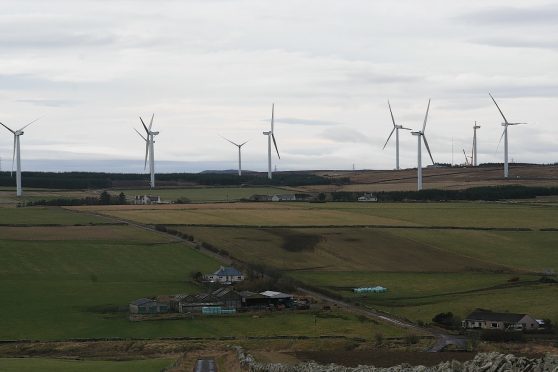The Highlands’ abundance of wind is generating eye-watering sums for wind farm operators – when they switch-off their turbines.
So-called ‘constraint payments’ are made to energy firms when the national grid can’t cope with the amount of power their sites are generating.
The payments often far exceed the payment from renewable energy subsidies and have been significant in parts of the north.
The constraint scheme started in 2010, and since then, Sutherland wind has generated £63.5 million in constraint payments for energy firms – more than the figure for England and Wales combined.
Last year alone, constraints payments in Scotland were approximately £130 million.
And, through the first six months of 2020 alone, constraints paid in Scotland are already just short of another £130 million – with operators enjoying a Covid-19 dividend while electricity consumption is at a major low, says the charity Renewable Energy Forum (REF).
Helen McDade, REF’s Scottish policy advisor said: “It’s also due to the rapid increase in capacity from new wind farms and extensions while the electricity grid is still unable to cope with that.
“Already, on windy days or days when the country’s demand is low, the electricity grid cannot cope with production from the wind farms already operating in Caithness and Sutherland.
“This has led to eye-watering sums being paid to wind farm operators to turn off turbines – money that ultimately comes from all electricity customers.”
Energy firms do not get paid when the turbines stop for mechanical reasons, or when there’s not enough or too much wind.
Beatrice offshore has received payments of more than £850,000 during 2019 and 2020, more than half of that in 2020.
Bailie windfarm (Caithness) has had more than £4 million in its lifetime, including £1.2 million in the first six months of 2020.
Strathy North (Sutherland) has had more than £16 million since 2015, while Stronelairg near Fort Augustus has had £23 million in 2019 and 2020. It was paid constraints from its first month of operation.
Anti-windfarm campaigner Brenda Herrick of Caithness Wind Information Forum warned the situation will only get worse as more wind farms are built.
There are currently 176 turbines operating in Sutherland. Should all those currently in the scoping and planning process be consented, that number could conceivably rise to 640.
She said: “Sutherland is one of the worst examples of this, so I see no sense in consenting yet more wind farms in such a remote area only for them to be paid to do nothing.
“Offshore is paid at about twice the price of onshore.
“Surely this proves these wind farms are being built much too far from where their electricity is required?”
REF director Dr John Constable said: “In spite of expenditure on grid reinforcement and new lines such as the Western Link, the electricity system is failing to keep up with the development of wind in Scotland, resulting in very high costs to consumers.
“Government both at Holyrood and Westminster must share the blame.
“Meanwhile, heads or tails, the energy companies win handsomely.”
Highland Green party candidate Anne Thomas said the need for constraint payment is diminishing as more interconnectors come on stream and the increase in battery storage means more energy can get to where it is needed.
She said: “Wind power is the cheapest renewable energy to install.
“Unlike fossil fuel fuels, wind is free and far from adding to the costs of energy, it is actually keeping energy costs stable and reducing fuel poverty.
“It’s now much cheaper to install than new nuclear.
“The fossil fuel industry receives more in indirect subsidies.”
